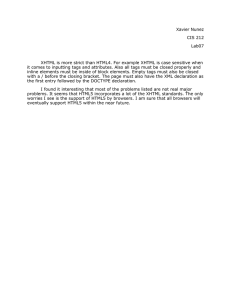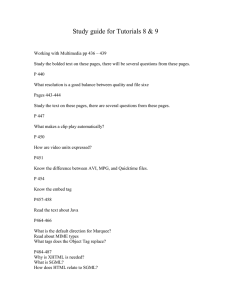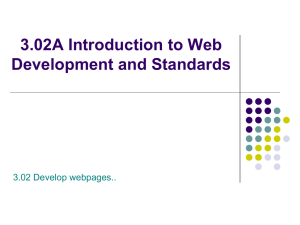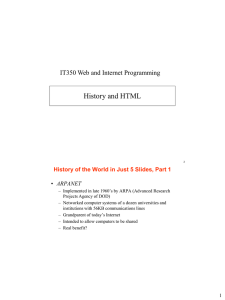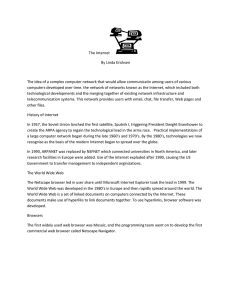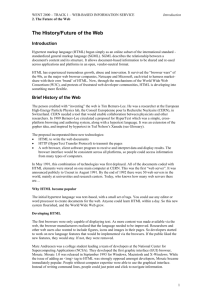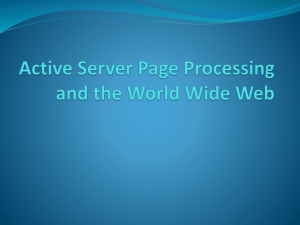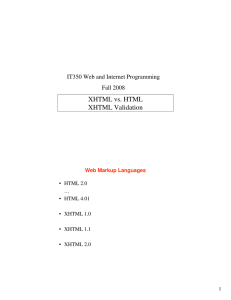A very brief history of the internet
advertisement
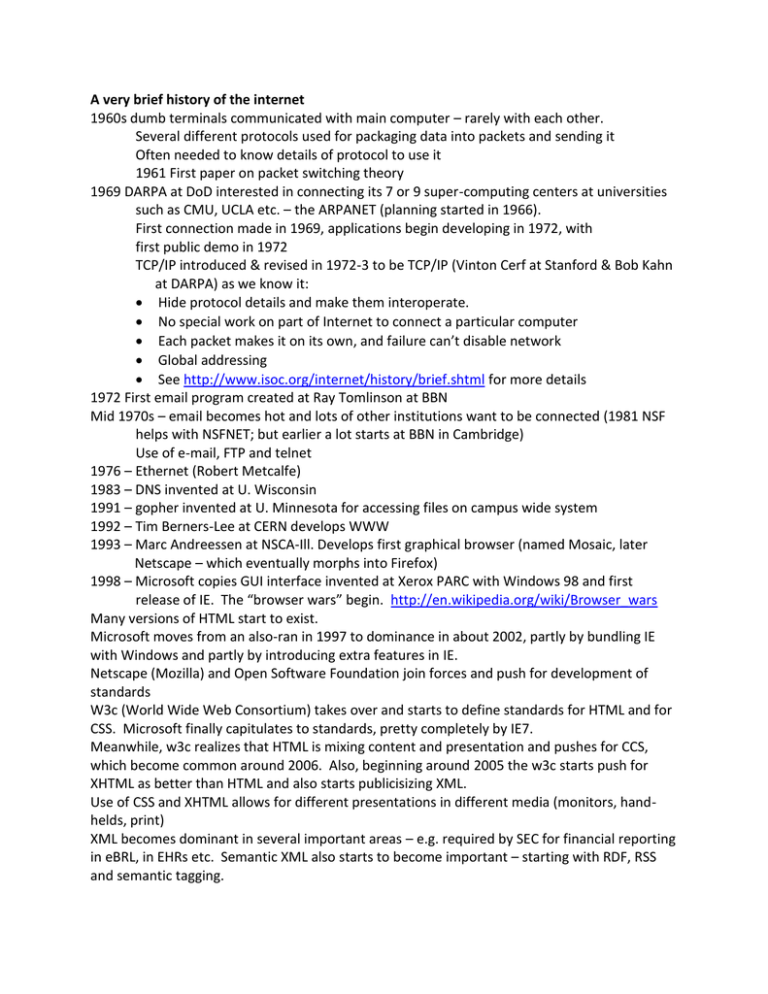
A very brief history of the internet 1960s dumb terminals communicated with main computer – rarely with each other. Several different protocols used for packaging data into packets and sending it Often needed to know details of protocol to use it 1961 First paper on packet switching theory 1969 DARPA at DoD interested in connecting its 7 or 9 super-computing centers at universities such as CMU, UCLA etc. – the ARPANET (planning started in 1966). First connection made in 1969, applications begin developing in 1972, with first public demo in 1972 TCP/IP introduced & revised in 1972-3 to be TCP/IP (Vinton Cerf at Stanford & Bob Kahn at DARPA) as we know it: Hide protocol details and make them interoperate. No special work on part of Internet to connect a particular computer Each packet makes it on its own, and failure can’t disable network Global addressing See http://www.isoc.org/internet/history/brief.shtml for more details 1972 First email program created at Ray Tomlinson at BBN Mid 1970s – email becomes hot and lots of other institutions want to be connected (1981 NSF helps with NSFNET; but earlier a lot starts at BBN in Cambridge) Use of e-mail, FTP and telnet 1976 – Ethernet (Robert Metcalfe) 1983 – DNS invented at U. Wisconsin 1991 – gopher invented at U. Minnesota for accessing files on campus wide system 1992 – Tim Berners-Lee at CERN develops WWW 1993 – Marc Andreessen at NSCA-Ill. Develops first graphical browser (named Mosaic, later Netscape – which eventually morphs into Firefox) 1998 – Microsoft copies GUI interface invented at Xerox PARC with Windows 98 and first release of IE. The “browser wars” begin. http://en.wikipedia.org/wiki/Browser_wars Many versions of HTML start to exist. Microsoft moves from an also-ran in 1997 to dominance in about 2002, partly by bundling IE with Windows and partly by introducing extra features in IE. Netscape (Mozilla) and Open Software Foundation join forces and push for development of standards W3c (World Wide Web Consortium) takes over and starts to define standards for HTML and for CSS. Microsoft finally capitulates to standards, pretty completely by IE7. Meanwhile, w3c realizes that HTML is mixing content and presentation and pushes for CCS, which become common around 2006. Also, beginning around 2005 the w3c starts push for XHTML as better than HTML and also starts publicisizing XML. Use of CSS and XHTML allows for different presentations in different media (monitors, handhelds, print) XML becomes dominant in several important areas – e.g. required by SEC for financial reporting in eBRL, in EHRs etc. Semantic XML also starts to become important – starting with RDF, RSS and semantic tagging. 2008 w3c faces up to many new formats (streaming video, Flash etc.) & complexity of XHTML. Starts to develop HTML5 as preferred format, with support for new media. Now supports HTML5 and XHTML.
